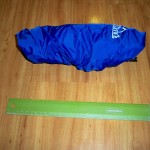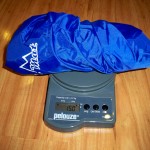You could say that rope is the backbone of a campsite. It goes into everything from tents and shelters to cooking tripods and furniture. One of the best ideas I’ve seen in a long time is a “rope kit” — an organized collection of pre-cut ropes. Here’s how to put one together.
What is a Rope Kit?
I can’t imagine going into the wild without the core essentials. One of those is rope. I always keep at least 100 feet of 550 paracord in my pack and a shorter length in my survival kit (better idea for the survival kit: Titan Survivorcord).
If you need something even stronger, you might consider 750 paracord. (See also Everything You Wanted to Know about Paracord)
It surprises me how often the rope comes out. From lashing a camp stool to stringing a ridge line to hanging a bear bag, I reach for rope constantly. If you’re anything like me, you hack off a piece of rope to fit the immediate need, and when you’re done with it, you end up tossing it into your bundle of random rope scraps.
At least that’s how I used to do it.
Now when I need a piece of rope, I pull out my bag of pre-cut cord. It holds the four lengths I use most, organized and bundled by size. I just pull off the size I need. At the end of my trip, I quickly sort the rope lengths, take a minute to daisy-chain them, and toss them back in the bag, ready for the next outing.
That’s a rope kit — an organized collection of rope sizes, pre-cut and ready to use.
How Do I Make a Rope Kit?
Making a rope kit couldn’t be easier. I originally got the idea from . After watching his video, I had my own rope kit put together in about half an hour, most of that time spent fusing the ends of the ropes to keep them from fraying.
The only hard part about putting together a rope kit is deciding what sizes to use. Here’s how I broke up a 100-foot length of 550 cord, and it has served me well:
- 8 x 3-foot segments (in two daisy chains of 4)
- 4 x 6-foot segments
- 2 x 12-foot segments
- 1 x 28-foot segment (the remainder of the rope; could be anywhere from 25-30 feet)
Group the rope segments by size and daisy-chain them. Daisy-chaining (also known as a “chain sinnet”) keeps the ropes from tangling and gives you quick access to them — daisy chains pull apart readily, even one-handed. Finally, toss your daisy chains into a small stuff bag. That’s all there is to it.
One hundred feet of 550 cord will weigh in at about half a pound. Adding an additional, uncut, 100-foot rope brings the weight up to about a pound.
The Rope Kit — Good Rope Efficiency
Before you start setting up a camp site, lay out your ropes by size. Then grab them as you need them. I love the efficiency of pre-cut rope. Sure, the lines are sometimes longer than I need, but that’s a minor inconvenience, especially considering how little rope I waste these days.
A rope kit saves time, conserves rope, and keeps you well-organized. That’s reason enough to adopt one for yourself.
But let’s go a step further. Imagine you broke an arm (your strong arm), and a cold, wet night is setting in. You have to get a shelter up. If all you have is a bundle of rope, you’ll be fumbling with it one-handed in the cold rain, trying to keep it taut so you can get segments cut off, and hoping it doesn’t tangle. But if you have a rope kit, every line size you need, from a ridge line to a lashing, is at your fingertips, ready to go.
In a survival situation, the efficiency of having the rope you need, when you need it, can make a critical difference.


